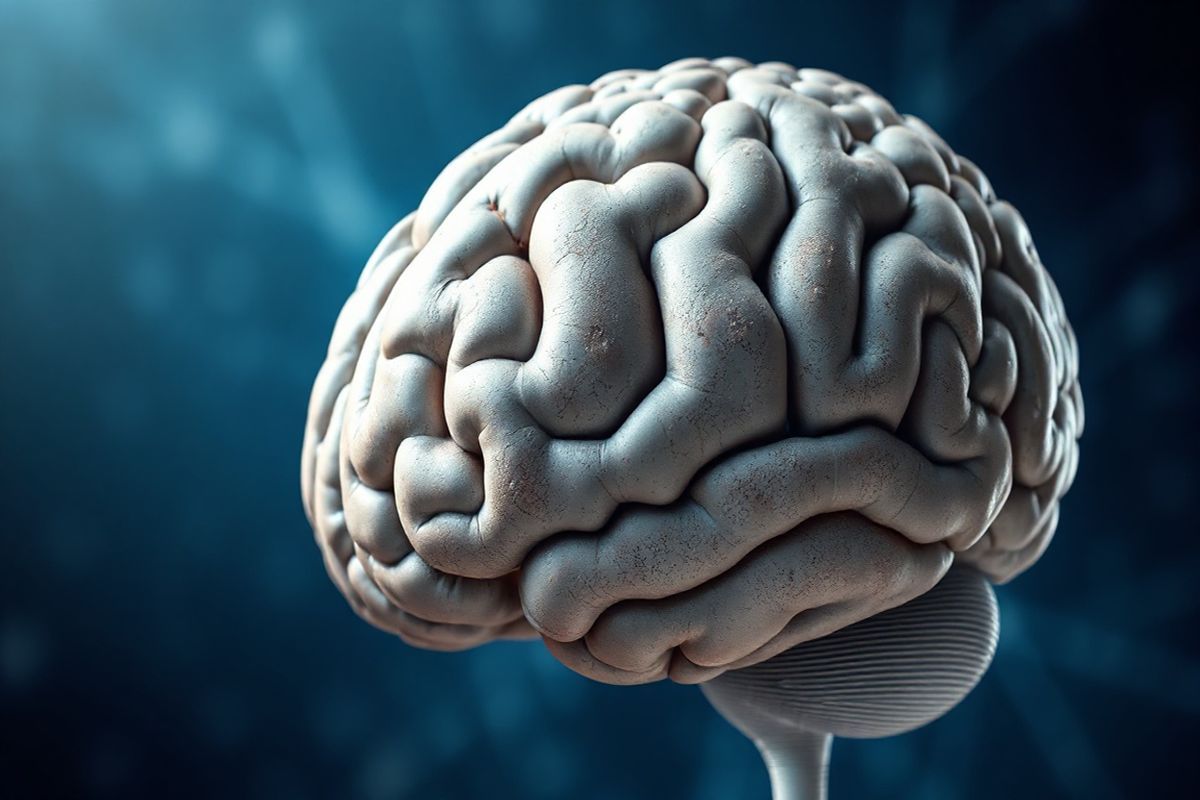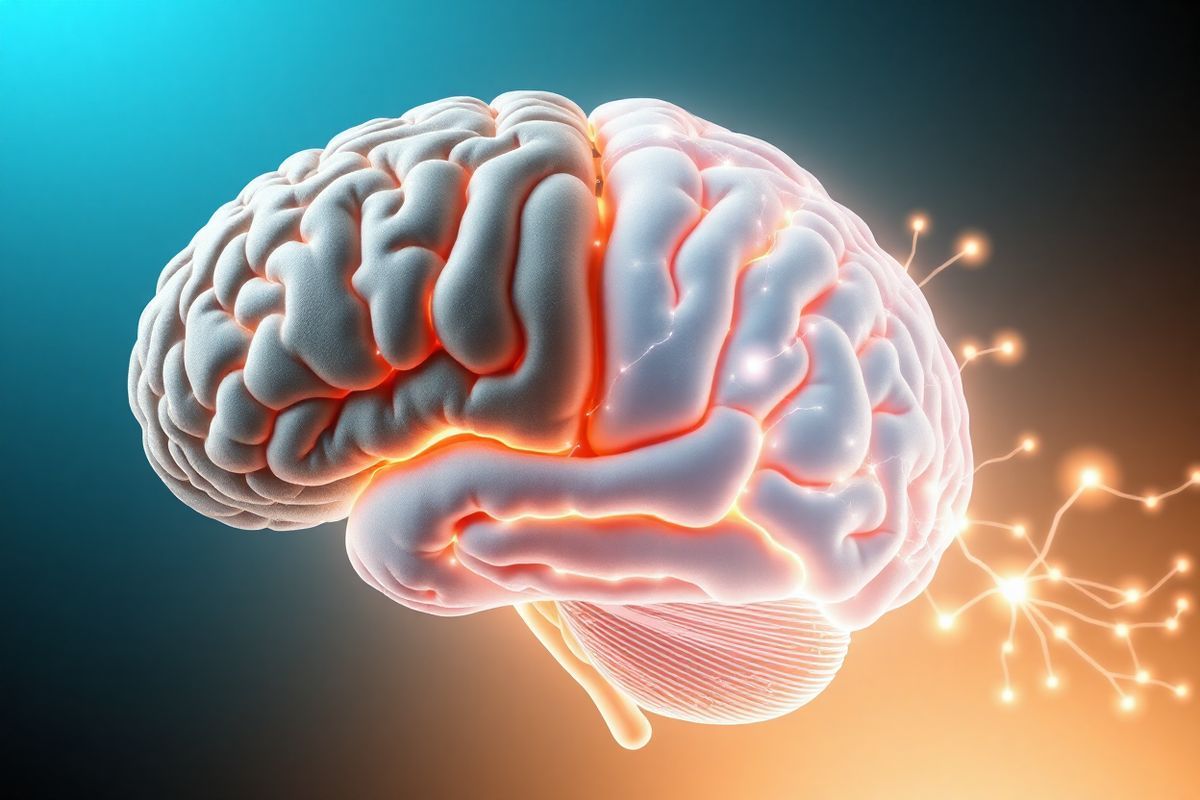Table of Contents
The Essential Roles of Gray Matter in Cognitive Function

Gray matter primarily consists of neuronal cell bodies, dendrites, and unmyelinated axons. It is responsible for processing and integrating information. Found predominantly in the cerebral cortex, basal ganglia, and cerebellum, GM is crucial for functions such as muscle control, sensory perception, memory, emotions, and decision-making.
Research has shown that the density of gray matter can be correlated with cognitive abilities. For instance, individuals with higher gray matter volume in certain brain regions, such as the prefrontal cortex, tend to exhibit better executive functions, including planning, reasoning, and problem-solving (Rasmussen et al., 2023)¹. Moreover, the amount of gray matter can decrease with age or neurodegenerative diseases, potentially leading to cognitive decline.
TablKey Functions of Gray Matter
| Function | Description |
|---|---|
| Information Processing | GM integrates sensory inputs and coordinates responses. |
| Memory Formation | Critical for encoding and retrieving memories. |
| Motor Control | Involved in planning and executing voluntary movements. |
| Emotional Regulation | Plays a role in managing emotions and social behaviors. |
Unveiling the Functions of White Matter: The Brain’s Communication Network

In contrast to gray matter, white matter consists mainly of myelinated axons, which form the communication pathways between different brain regions. The myelin sheath, which encases these axons, is composed of lipids and proteins, giving WM its characteristic white color. This myelination enhances the speed and efficiency of electrical signal transmission across neurons, thereby facilitating rapid communication within the brain.
White matter is crucial for coordinating between the various regions of the brain. For example, it connects the front of the brain (involved in decision-making and planning) to the back (involved in sensory processing), ensuring that information is relayed quickly and accurately. Damage to white matter can lead to significant cognitive deficits, as seen in conditions like multiple sclerosis, where demyelination disrupts communication pathways (You et al., 2024)².
TablKey Functions of White Matter
| Function | Description |
|---|---|
| Signal Transmission | Facilitates rapid communication between brain regions. |
| Coordination of Activity | Links different functional areas to ensure cohesive brain function. |
| Cognitive Processing | Aids in the integration of information for higher cognitive functions. |
Comparing Gray Matter and White Matter: Key Differences Explained
While both gray and white matter are essential for brain function, they differ in composition, function, and location.
TablComparison of Gray Matter and White Matter
| Feature | Gray Matter | White Matter |
|---|---|---|
| Composition | Neuronal cell bodies, dendrites, unmyelinated axons | Myelinated axons |
| Main Functions | Processing information, emotional regulation, memory | Communication between brain regions |
| Location | Cerebral cortex, basal ganglia, cerebellum | Subcortical areas, corpus callosum |
| Impact of Damage | Affects cognitive functions and emotional health | Disrupts communication, leading to cognitive deficits |
The Impact of Injury on Gray and White Matter: Consequences for Brain Health
Injuries to the brain, such as traumatic brain injuries (TBI), strokes, or neurodegenerative diseases, can have profound effects on both gray and white matter. Gray matter injuries often manifest as cognitive impairments, emotional disturbances, and issues with motor control due to damaged neuronal connections. For example, damage to the frontal cortex, rich in gray matter, can lead to difficulties in decision-making and problem-solving (You et al., 2024)².
White matter injuries, on the other hand, can disrupt the pathways that facilitate communication between different brain regions. This disruption can result in a variety of cognitive deficits, such as issues with attention, memory, and processing speed, commonly seen in conditions like vascular cognitive impairment (VCI) (Tongyao et al., 2024)³.
Exploring the Relationship between Gray Matter, White Matter, and Neurological Disorders
Both gray and white matter are implicated in various neurological disorders, highlighting the importance of their interplay in maintaining cognitive function. For instance, conditions like Alzheimer’s disease and vascular dementia are associated with the degeneration of both gray matter and white matter. Studies have shown that patients with Alzheimer’s exhibit significant gray matter loss, particularly in the hippocampus, along with white matter changes evident through neuroimaging techniques (Saldaris et al., 2024)⁴.
The relationship between gray and white matter changes and cognitive decline is an area of active research. Understanding this relationship can provide insights into the mechanisms underlying neurological disorders and inform potential therapeutic approaches aimed at preserving brain health.
TablNeurological Disorders Related to Gray and White Matter Changes
| Disorder | Gray Matter Changes | White Matter Changes |
|---|---|---|
| Alzheimer’s Disease | Significant loss, especially in the hippocampus | Disruption in white matter integrity |
| Vascular Dementia | Atrophy in cortical areas | Presence of white matter hyperintensities |
| multiple sclerosis | Less impact on gray matter | Demyelination and loss of white matter |
FAQ
What is the difference between gray matter and white matter?
Gray matter consists of neuronal cell bodies and is primarily responsible for processing information and integrating signals. White matter, made up of myelinated axons, facilitates communication between different brain regions.
How does injury affect gray and white matter?
Injuries can lead to cognitive impairments, emotional disturbances, and disrupted communication pathways, depending on whether gray or white matter is affected.
What role do gray and white matter play in neurological disorders?
Both types of matter are involved in various neurological disorders. Changes in gray matter are often linked to cognitive decline, while alterations in white matter are associated with disrupted communication between brain regions.
References
-
Rasmussen, R. N., O’Donnell, J., Ding, F., Nedergaard, M. (2023). Local changes in potassium ions regulate input integration in active dendrites. PLOS Biology, 21(12), e3002935. https://doi.org/10.1371/journal.pbio.3002935
-
You, T., Wang, Y., Chen, S., Dong, Q., Yu, J., Cui, M. (2024). Vascular cognitive impairment: Advances in clinical research and management. Chinese Medical Journal, 137, 2793–2807
-
Saldaris, J. M., Ayalde, J., Kankanange, S., Keeley, J., Leonard, H., Jacoby, P., Marsh, E. D., Benke, T. A., Demarest, S. T. (2024). Parent-reported outcome measures evaluating communication in individuals with rare neurodevelopmental disorders: a systematic review. International Journal of Language & Communication Disorders, 59(6), 2528–2553
-
Tongyao, Y., Wang, Y., Chen, S., Dong, Q., Yu, J., Cui, M. (2024). Review of Emotion Regulation in Late Life Mood Disorders. Chinese Medical Journal. https://doi.org/10.20900/jpbs.20240008











